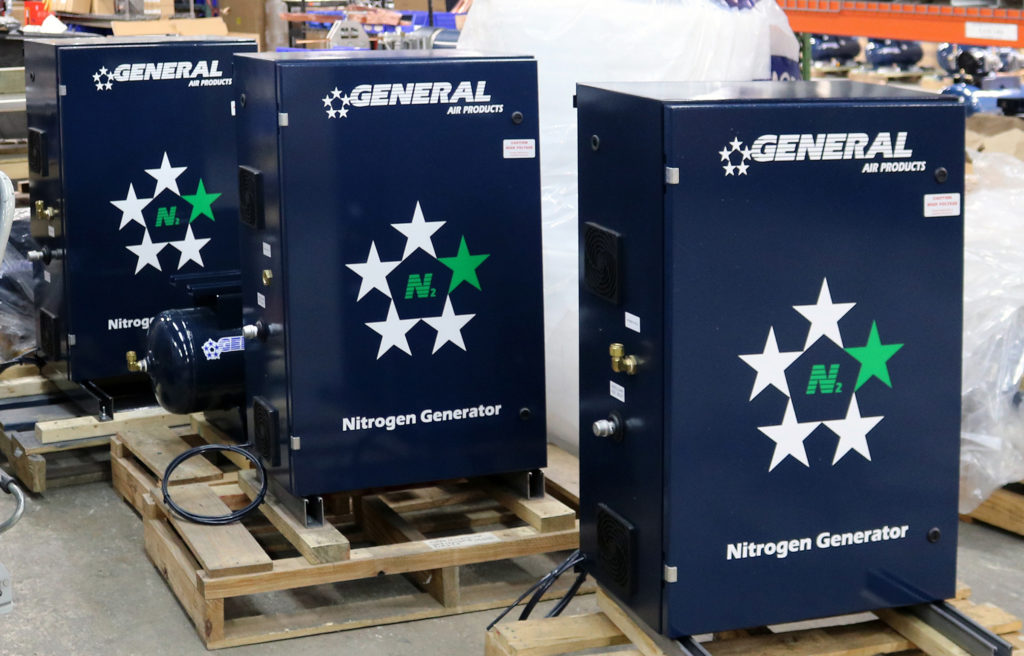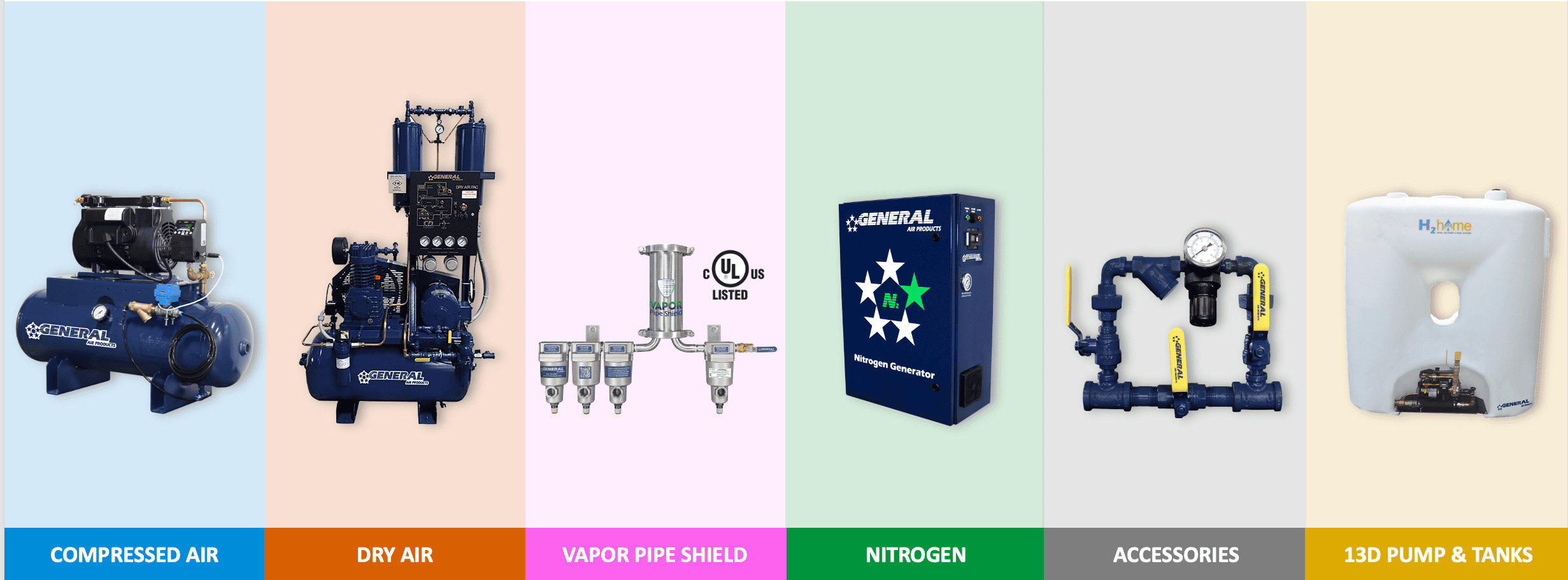We’ve received a few calls from the field about the air compressors on nitrogen generators running much longer and more frequently than they were prior to putting nitrogen on the system. These calls are often triggered by a low air alarm, or a concerned facility manager who’s been listening to their system run more than its at rest.
There are several reasons for this, some inherent to the function of a nitrogen generator, while others are indications of more serious issues with the fire sprinkler system and its compatibility with the use of a nitrogen generator. How much your air compressor runs is often a telling signal of whether your system is a good fit for a nitrogen generator.

Why So Often?
A nitrogen generator is best looked at as an air compressor with a few filters on it. As compressed air flows through the pre-filters and the nitrogen membrane (the largest, most expensive filter in any nitrogen generator), oxygen molecules escape while nitrogen molecules are allowed to pass. The nitrogen membrane discharges that oxygen to produce a gas that is 98% nitrogen for use in the dry pipe sprinkler system. This high level of filtration makes the air compressor work harder to provide the flow required to maintain system pressure, while the membrane also acts as a bottleneck for the compressed air, and as a result restricts the flow of the 98% nitrogen gas allowed to leave it.
For example, our standard 2 horsepower oil-less air compressor has a flow of 14.9 CFM. When we use that compressor to generate nitrogen, the flow of the air after the membrane set for 98% nitrogen is reduced to 0.6 CFM.
When the flow on that 2HP fire protection air compressor installed on a nitrogen generator is reduced to 0.6 CFM, it becomes about 4% as efficient at pressurizing the system than standard compressed air. The nitrogen membrane is the main reason for the drop, but there are effects from the pre-filters on any membrane nitrogen generator as well. A nitrogen membrane is very sensitive to particulates, and needs to be protected by several particulate and condensate pre-filters. All of this filtration adds up to a system highly effective for mitigating corrosion, but not so efficient for your air compressor. This is one of the trade-offs of switching to nitrogen. Remember, it is important to define the scope of your corrosion issue before investing in nitrogen to be sure that new issues you introduce with the use of a nitrogen generator are still in line with the ROI you anticipate.
What Does the Added Stress on the Air Compressor Mean for My System Maintenance and Operation?
- A system with a nitrogen generator installed will need more frequent air compressor replacements throughout the life of the system.
- A system with a nitrogen generator installed will need closer monitoring and careful maintenance, more so than what was being done when the dry system was being maintained with the air compressor alone, to ensure its run time is in line with expectations.
- The end user or building owner may see increased energy costs as a result of the nitrogen generator needing to run for longer than a standard compressor.
- Installing a nitrogen generator makes the system much more sensitive to leak rates. An N2 Generator will slow the rate of pin-hole leaks due to corrosion, but all dry pipe sprinkler systems leak for various other reasons unrelated to corrosion. Those leaks will continue to grow as the system ages and this will cause the compressor on the nitrogen generator to run more and more.
What Can I Do to Reduce the Run-Time of My Nitrogen Generator?
- Measure your dry pipe sprinkler system’s leak rate before the generator install, and ensure the nitrogen generator is sized accordingly. Many existing sprinkler systems operate with leak rates well above NFPA’s existing system allowable rate of 3 PSI in 2 hours. Knowing what your nitrogen generator will need to keep up with will help ensure its long-term success.
- Replace as much leaky pipe and leaky components as possible before installing a nitrogen generator on any existing system. Bring the leak rate down as low as possible.
- Do regular checks for air (nitrogen) leaks in your sprinkler system.
- Nitrogen generators are much more sensitive pieces of equipment than a standard fire protection air compressor. Make sure to frequently check the filters on your nitrogen generator, especially if it is in a dirty environment. Clogged intakes and saturated filters will kill a nitrogen generator in a very short amount of time.
- Every sprinkler system is unique – so make sure your nitrogen generator is sized for your system, and allows for growth in your system’s leak rate over time.
Corrosion mitigation tip: It is often not feasible to fix known air leaks in a system due to their location in the building, the associated cost to the building owner, or in sensitive applications such as freezer rooms. As a result, many contractors have been turning to Dry Air, which offers both corrosion mitigating advantages to the piping network and has a CFM that more closely resembles a standard air compressor. Dry Air is much less susceptible to system leak rates over time, will not run as long as a nitrogen generator to keep the system up to pressure, and is a less expensive alternative to nitrogen generators as corrosion mitigating technology.
Is your nitrogen generator not keeping up with your system? Concerned about the life of your air compressor? Give us a call at 1-800-345-8207 for advice on the best dry pipe sprinkler system filling technology for your application! Whether it’s compressed air, Dry Air, or Nitrogen, we want to see you fit for the right piece of equipment.
General Air Products manufactures the most complete line of fire sprinkler filling solutions in the industry.
